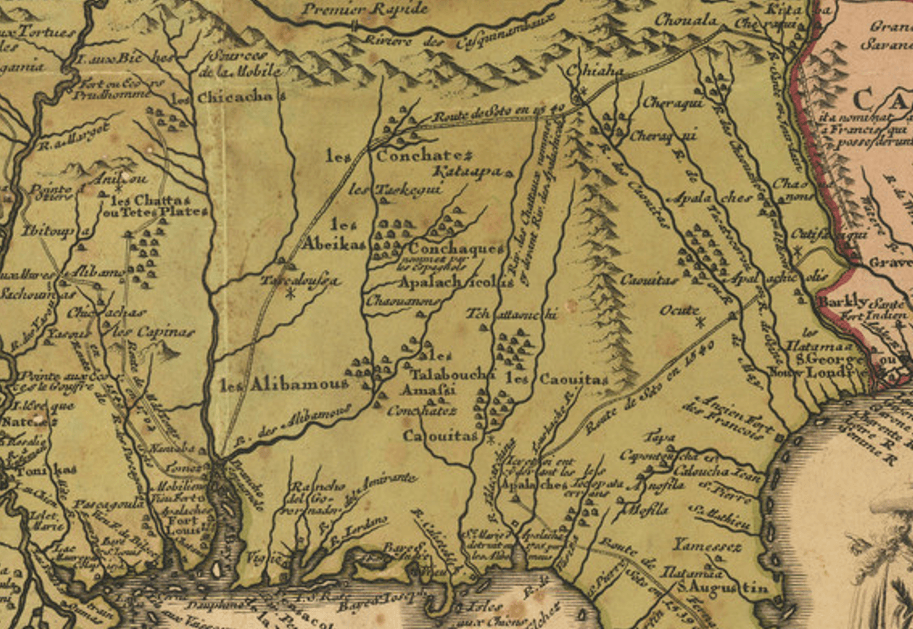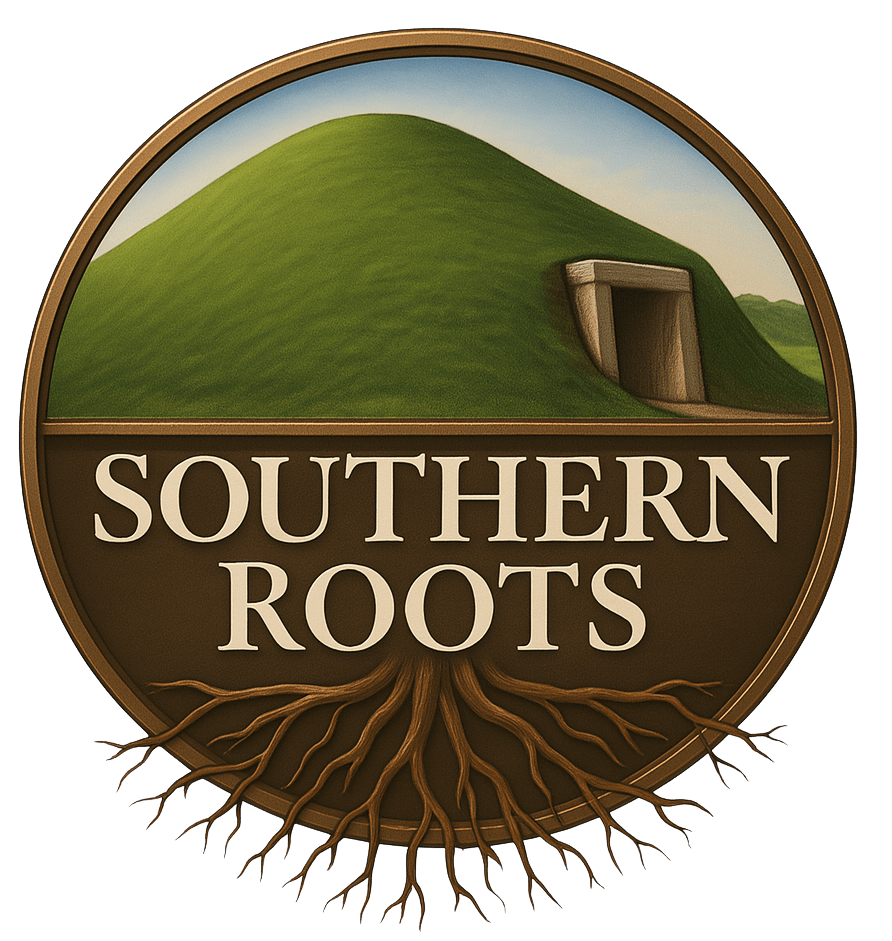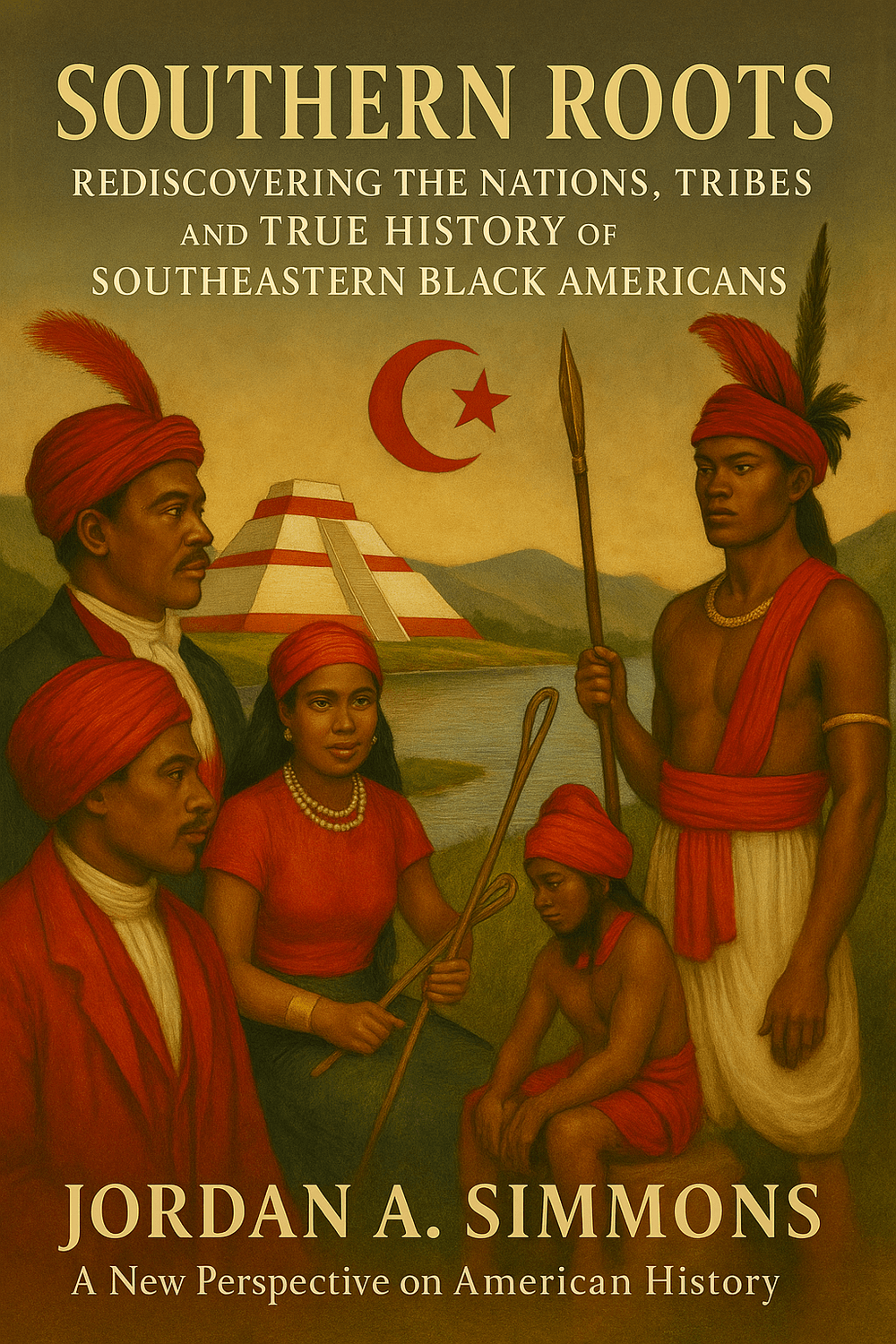The Ancient American Towns of the Southeast: Hidden Homelands of Southeastern Black Americans
What if the towns within the southeastern region were once the capital cities, villages, and ceremonial centers established by "Black" Americans?
Before they were renamed, reclassified, and resettled, these places were known as "Creek" towns — the organized settlements of the Maskôki (Muscogee) Confederacy. These were not scattered bands of people. They were structured town-based governments, many of which still exist in name, memory, or land.
And many of the people who descend from them have no idea who they really are.
The Creek Confederacy: A Nation of Towns
The so-called "Creek Indians" were not a single tribe. They were a confederation of sovereign towns and provinces with shared language, laws, and ceremonial customs. According to Albert Gatschet of the U.S. Bureau of Ethnology:
"The Maskoki family of tribes occupied a central and commanding position" in the Southeast. (Migration Legend of the Creek Indians, p. 50)
Each town had a role: some governed peace, others managed war. Some were known for sacred fire temples, others for trade, diplomacy, or agriculture. These were active political identities.
Bartram, Hawkins, Gatschet, and others documented these towns in detail. What they revealed was not a dying tribal culture, but a living nation spread across Georgia, Alabama, and northern Florida, with remnants reaching into Mississippi, Tennessee, and the Carolinas.
A Map Hidden in Plain Sight
Many of the names used for counties or cities and towns today trace directly to towns established by the so-called "Creeks" who were really the ancestors of southeastern "Black" Americans:
Coweta was a political capital established near Macon, Georgia and later at the site of Columbus, Georgia and Phenix City, Alabama. All three of these cities are majority "Black" in population.
Eufaula was a ceremonial town. It survives as the majority "Black" town Eufaula, AL near the Alabama/Georgia Line.
Tuckabatchee became part of Montgomery, AL and the surrounding region. Montgomery is a majority "Black" city and the capital of Alabama, just as Tuckabatchee was considered the capital of the Upper Maskoki Dominion.
Kasihta is now known as Cusseta, GA, just south of Columbus, Georgia all the way to Cusseta, AL.
These aren’t coincidences. The descendants of these towns were reclassified by law, many absorbed into slavery, and renamed as "Negro," "colored," or "Black."
But the geography didn’t lie. The land remembers.
A List of Creek Towns Recorded by Albert Gatschet
Below is a curated list of historical towns established by "Black" Americans. These town are concealed as "Creek" towns in Gatschet’s ethnographic work. These towns existed prior to forced removal in the 1830s. Some remain as place names; others survive only in oral tradition or descendant communities:
Upper Creek Towns
Abi'hka – Principal root town; near Upper Coosa River
Tukabatchee – Sacred plates kept here; national council town
Tallassee (Talisi) – Ceremonial mound town; near Montgomery
Fusi-hatchi – Bird Creek
Odshi-apofa – Hickory Ground
Imukfa – Conch gorget; site of the Horseshoe Bend battle
Koasati – Later known as Coosada, AL
Kosa (Coosa) – Old capital; Upper Coosa River
Hillabi (Hilapi) – Based on Hillabi Creek
Ipisogi – On Tallapoosa; "shell" or metal related
Niuyaka – "New York Town," post-treaty settlement
Wewoka (Wiwuyka) – "Roaring water"
Sawanogi – Shawnee town within the Confederacy
Socopatoy (Sakapataiyi) – Upper Creek town near Hatchet Creek
Lower Creek Towns
Kawita (Coweta) – Capital of the Lower Creeks
Kasihta (Cusseta) – Town with mound and public square
Apalachukla – Peace town and ceremonial center
Osotchi / Chiaha – Twin towns near the Chattahoochee River
Yuchi (Yufala) – Survives as Eufaula
Okfuski – Pointed promontory town
Sawokli / Sawokli-Udshi – Raccoon gens towns
Okoni – Migrated from Georgia; Hitchiti-related
Amakalli – Chiaha-founded town on Flint River
Che'lako-Nini – Horse Trail town
Okmulgi – "Boiling water"
Hillabi & Outlier Villages
Anati Tchapko – Long Swamp; Red Stick resistance site
Atchina Hatchi – Cedar Creek
Atchina-Dlgi – Cedar Grove
Tutalpusi – "Chicken Town"
Padshildika – Pigeon Roost
Lutchapoga – Terrapin Resort
Tuktokagi – Corn Crib Town
Lanudshi Apala – Beyond the Little Mountain
This is only a partial list. Over 100 towns, villages, and ceremonial grounds were documented in the pre-removal Southeast.

Figure 2. Early French Map Showing Towns of the Southeastern Confederacy
This French map from the early 1700s names towns such as Apalaches (Apalachee), les Caouitas (Kawita), Talabouchi (Tuckabatchee), Alibamous (Alabamu, where we get Alabama), and more. These are the same towns recorded by Albert Gatschet and others as centers of government, ceremony, and law. Many of these names survive today in the form of Southern cities and counties. The map shows the presence of organized, town-based nations long before removal or racial reclassification.
Why This Matters
Black Americans with deep Southern roots may not be immigrants or outsiders to this land. Many are the reclassified descendants of these towns.
Some of these names remain in family stories and place names. But, many were erased.
But this history is not lost.
It is preserved in the names. In the land. In the people who never left.
Learn More
This blog is part of the Southern Roots project: a historical platform restoring the truth about Southeastern Black Americans and their Indigenous nations.
Visit WeAreSouthernRoots.com for more articles, maps, and primary sources.
Read more in the upcoming book: Southern Roots: Rediscovering the Nations, Tribes, and True History of Southeastern Black Americans.
Let us know what you think in the comments!

